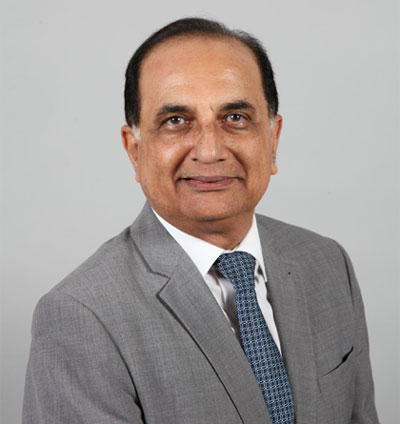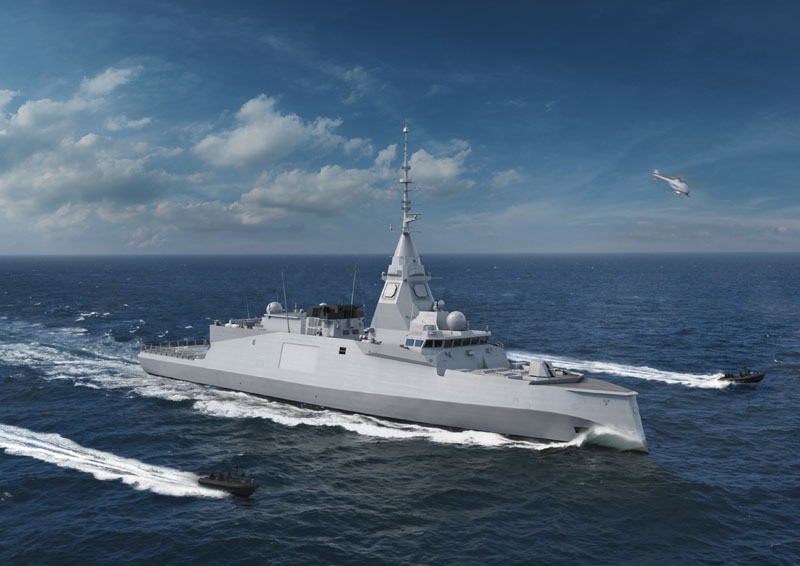On P75I, we are happy to propose a design fully compliant with the specifications of the Navy
 Can you give an overview of the Scorpene programme at MDL? Is the Naval Group team still present at MDL?
Can you give an overview of the Scorpene programme at MDL? Is the Naval Group team still present at MDL?
The Scorpene programme is progressing very well. The year 2019 witnessed the commissioning of the second Scorpene submarine Khanderi by the defence minister and the launch of the fourth submarine named Vela by Veena Kumar, wife of defence secretary Ajay Kumar.
The last two submarines — INS Vagir and INS Vagsheer — are in advanced stages of manufacturing on the assembly line at MDL and are scheduled to be launched in succession. With four submarines already launched, two undergoing sea trials and two commissioned, we are happy to say that the cooperation and transfer of technology with MDL has been a success.
Given that the navy has said that it will continue to pursue the P-75I programme under strategic partnership model and not place follow-on orders for Scorpene, will Naval Group participate in the programme? Which platform will you offer?
We are honoured to have received and responded to the expression of interest (EOI) of P-75I for the foreign OEMs. Having already achieved very high level of indigenisation during P75 project and the expertise derived from designing and constructing both latest generation of conventional and nuclear submarine of different size and tonnage, we are ready to propose a fully-compliant solution for Indian Navy.
Given the strategic partnership and the mutual working experience we have developed with Indian industries and shipyards, we would definitely be happy to propose a design, fully compliant with the new specifications.
Are you still in touch with the DRDO for its Air Independent Propulsion system?
We are closely working with DRDO to integrate the indigenous AIP in the Indian Scorpene® submarines during their future normal refits.
In the course of the Scorpene programme, Naval Group built a supply chain in India. What will be the future of this supply chain?
Along with MDL, a large number of Indian industrial partners have also invested in transfer of technologies and machinery to build equipment in all three of float, move and fight domains for the P-75.
We have worked with a range of MSMEs like SEC, Flash Forge, HBL and many more under this programme. This has enabled equipment to be locally manufactured in the categories of Float (Hulls, Hatches, Ballast Valves), Move (Steering Consoles) and Fight (Weapon Handling).
Naval Group is so satisfied with the quality standard adhered to, that they have taken a step further and outsourced procurement of certain equipment for the French Navy’s latest submarines, under construction, from these Indian MSMEs. It is however, a pity that we are not in a position to assure any future business to these MSMEs, unless the government decides to build more such submarines.
Do you see the possibility of revival of the LPD programme?
The LPD RFP has been issued under a Buy & Make (Indian) category to local shipyards. We are awaiting the decision of India Navy and ministry of defence on this project and stand ready to abide by the decision of the government.
What is the update on the simulator for submarine applications?
Naval Group is proposing advanced simulators for submarine applications to Indian Navy. Such simulators are being proposed with high indigenous content and in partnership with Goa Shipyard Limited (GSL) which is not only a key shipbuilder but also centre of excellence for simulators.
Most global companies are incorporating autonomy and artificial intelligence in their future programmes. In terms of R&D, what are the new developments at Naval Group?
Naval Group is very active when it comes to R&D activities. For several years, the pace of innovation picked up, involving shorten cycles. Naval Group raises its capacity to innovate and offer competitive products on the market able to provide a real capabilities advantage in-theatre. The Group is able to integrate required innovations to its customers, continuously, on incoming ships and those who are in operation. It is reinventing the design, the construction and the maintenance of ships, making use of new technologies (numeric, artificial intelligence, smart factory).
Our latest innovative systems include the digital twin ship, additive manufacturing (3D printing) which enable us to produce innovative propeller. For the mine warfare programme, Naval Group reached a World First with the launch and recovery of drones (LARS) regardless of the sea state. The innovation is also in solutions dedicated to drone mission management and to real time integration of all data collected, for the benefit of ships and naval forces.
We also co-develop innovative solutions locally with the most creative actors of our partners DITB. Naval Group opened two R&D international centres in Singapore and Australia. These innovation centres of excellence are dedicated to research in new technologies (Artificial intelligence, Internet of things, Big data) using the latest innovative trends which are relevant to our sectors and customers.
Given your worldwide experience, what do you view as the limitations of the Indian defence procurement procedure? What needs to be done to create a sustainable defence industrial base in the country?
We are closely working with Indian Navy and government, and we do not believe to be in position to comment on any policies of the government based on their vast experience of running such big country full of varieties and necessary complexities. However we believe it would be good for the country to allow a minimum of 51 per cent FDI in the defence sector without any riders to linkages with ‘modern technology’ so as to enable international defence companies to exercise adequate control over the joint venture companies, IPR and the product quality.
For investment intensive projects requiring huge sums of money for tooling, machinery and developing the skills to build some platforms, the lack of visibility for sustainable long term production is making it difficult to nurture the industrial eco-system already developed. Loss of expertise will have to be compensated by additional investments in future to overcome a new learning curve.
Specifically, the shipbuilding industry certainly needs a continuous flow of shipbuilding orders to maintain key skills. This has been recognised by all developed countries and they are taking actions to ensure that their shipyards are kept engaged with suitable work/ orders.
The Indian ministry of defence says that changing the location of DefExpo for each edition is to encourage wide spreading of the defence-industrial ecosystem. From the global OEM’s perspective, how useful or cumbersome is this approach?
Major exhibitions like DefExpo are useful for foreign exhibitors to meet the customers, various stakeholders and decision makers. As long as Indian Navy and MOD key officials are attending these exhibitions, the location where it happens is not a major issue provided there are enough hotels to accommodate the flux of visitors and exhibitors.

What future opportunities does Naval Group see in India?
Taking into account Indian Navy’s experience and existing infrastructure at its naval bases, Naval Group is ready to assist Indian Navy to support the P75 submarines to ensure optimised availability at sea of P75 submarines. We are also training our local teams under supervision of experts from maintenance domain to perform critical tasks on-board the submarines.
The Indian Navy has an ambitious modernisation programme and Naval Group would like to support that vision by helping build modern platforms. Naval Group is interested in supporting the Indigenous Aircraft Carrier (IAC) 2, which is at the design stage with Indian Navy and other future naval platforms with high-end military requirements and performances.
We are proposing to IN, in the framework of the heavy weight torpedo (HWT) RFP, the F21 torpedo, the latest generation HWT developed for the French Navy for its latest SSN submarines and whose characteristics far exceed all other heavy torpedoes currently in service. It has recently passed successfully its latest operational trials through exceptional performance levels and is soon to be inducted.
In addition, we are in discussion with Indian shipyards for future surface ship programmes and also proposing latest simulators and tools for training and maintenance for P-75 submarines. We are engaging with stakeholders at Naval Dockyard to support them in ensuring most optimized service support for operational Kalvari class submarines.
The Group is committed to the Indian Navy and Indian government for ‘Make in India’ approach of doing business — hence we see a lot of opportunities in the future.

